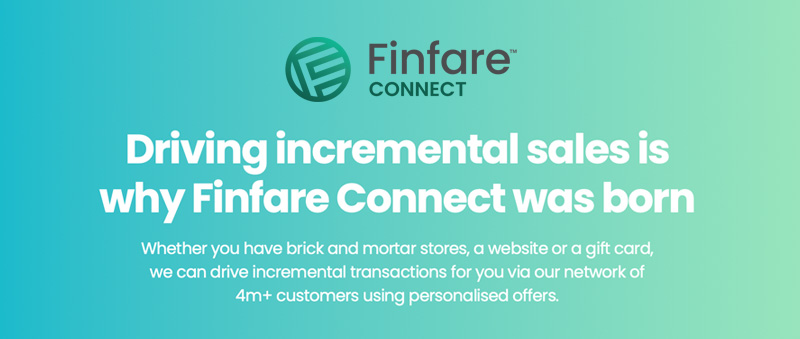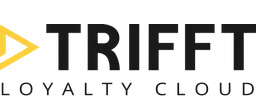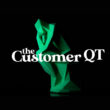Ever wondered what it takes to cultivate a loyal customer base that feels more like a community? Jakub Minks, the visionary founder of TRIFFT, joins us to share his expertise on creating loyalty programs that truly resonate with customers. This episode is a treasure trove of insights for businesses navigating the sometimes murky waters between small-scale loyalty solutions and complex enterprise systems. Jakob breaks down how TRIFFT helps retail and hospitality brands personalize their loyalty programs without getting tangled in the typical tech integration challenges, ensuring that their marketing teams can focus on what they do best – connecting with their customers.
Navigating the loyalty program space can be like walking a tightrope, but with Jakub’s guidance, we learn how to strike the perfect balance. He discusses the importance of loyalty initiatives aligning with a brand’s core values and how this alignment not only bolsters customer retention but also serves as a beacon for your brand’s identity. The conversion covers the tech stacks that empower adaptability and integration, providing a fresh perspective for mid-market companies seeking to avoid the quicksand of costly maintenance. Discover how TRIFFT’S approach molds itself into the existing tech landscapes of its clients, allowing for a seamless blend of digital and physical loyalty elements.
Looking ahead, Jakob paints a picture of the future of loyalty programs, one where personalization is key, and each customer’s experience feels as curated as their Netflix recommendations. We discuss the essential simplicity of the ‘earn and burn’ model and how artificial intelligence could potentially elevate these programs to new heights. With TRIFFT’S success stories and ambitious plans for market expansion, this episode promises to enthuse enterprise marketers and SMBs alike. Join us to explore how the loyalty landscape is evolving and how your business can stay ahead of the curve.
This episode of Customerland is sponsored by

Read the full transcript below
Mike Giambattista
Today I’m honored and grateful to be talking to Jakob Minks, who is who feels like a long-term friend from about two months ago. We’ve got a lot in common and it’s two people who share the same convictions about marketing and customer engagement and loyalty. So Jakob, by way of introduction, is founder and CEO of a really interesting loyalty platform called TRIFFT Jakob. Thank you so much for joining me. I really appreciate it.
Jakub Minks
Mike, thank you for having me Really appreciate to be here. I’m just excited about talking about stuff today.
Mike Giambattista
It’s what we always do when we get on the phone together. Would you mind giving us a better description, or a good description, of what TRIFFT is and does?
Jakub Minks
Yeah, absolutely so. We see ourselves as an end-to-end loyalty platform. I’ll expand on that. I’ll just say we focus in terms of industry, we focus on retail and we focus on hospitality, so mostly restaurant chains, mostly on a mid-market segment which has enough heft but maybe is not yet ready and enough internal capacity and is not yet ready or doesn’t make sense to go with bespoke, customized or enterprise solutions. So, really, that mid-market portion of that.
When I say end-to-end, what we always have in mind is this person who 905, with her coffee at the table is basically logging into the platform and they can manage everything regarding the loyalty program. So see the analytics, set up coupons, news, everything. And it’s not obviously just the administration of that, but also what we call consumer-facing channels. So it might be mobile apps, digital wallet cards what have you administration of that? But also what we call consumer-facing channels, so it might be mobile apps, digital road cars what have you their combination? So, yeah, it’s really a one-stop shop where we want you to be able to rely on us as a technological backdrop so that you can build those awesome loyalty experiences on top of it, whatever is the good fit for your firm.
Mike Giambattista
I’m interested to hear why you chose mid-market as a direction to take TRIFFT I’m going to editorialize a little bit here but the smaller end of the market, the S’s of the SMBs there are just so many loyalty platforms out there. There are built-ins, there are add-ons. It’s a flooded marketplace and I know that the enterprise level may not be flooded but it’s got its own kind of barriers to entry to there Was it purely a marketplace kind of low-hanging fruit play, or did you see something else going on in mid-market companies that you wanted to solve for?
Jakub Minks
So there’s two answers to it. One of them is it wasn’t overly strategized. We would see that gap, honestly. But I think there is a bit of a personal story in discovering the needs on the market and you know what works and what doesn’t work. So as an introverted person, I’ve been always better with more deep discussion, sort of consultative selling and, you know, just getting us in the game. And you cannot really do that on a small end of the market and really what we see is that with the product that we built is really good when you want to do sort of interactive loyalty and for that you need a team on the ground and if you’re running street restaurants or mom and pop shop you won’t be able to sort of utilize it fully. We see it with smaller clients. For them it’s essentially a burden. They would be better off with having something that they set and forget. Also, in a small setting you can deliver this awesome loyalty experience by just standing there training your staff.
On the enterprise end of the market there’s also two answers to that. You might go for the custom. You have, of course, entrenched competition there and you might grow into these shoes over time. If you’re moving anywhere, we’re moving upmarket, of course, but really, if we say, on a positive note, why mid-market, the ideal customer? They already have a marketing team, they know what the biggest guys are doing, why they’re doing it. So they would look at McDonald’s and say, right, I exactly know what they’re doing. I wish I would have the tool set right and we want to sort of enable them to say, all right, now I have it. There’s a right balance between it’s based on platform, so it’s de-risk, it’s time to delivery, it’s basically I’m spreading the cost of development and maintenance and security fixes and everything across the multiple clients. But there’s enough flexibility in it which you might not get from the S-focus SMB solutions which are basically you can choose any app you want, as long as it’s black, that kind of thing, right, right, where you might not necessarily be able to change the icon, but everybody’s got the same bottom menu with the same five things in there and you just deal with it. And that’s fine because, again, for that size, for that cost, at least you don’t have to think about for two months. Okay, what am I going to put down there? It’s not the choice, it’s there. That’s how that loyalty is going to work.
So, yeah, the clients that we love the most are those who have there is a company strategy and then it transfers into marketing strategy. You want to take the brand somewhere and then we won’t have to be a pillar that stands in the middle of the stream of thinking and say, no, you just have to deal with it. It’s like that there’s the same five icons below there. Sorry, I say okay, let’s just let the current and the future brand shine. That’s the idea. And if we have some clients like that, shout out to the Big Table Group over in London. But those guys who can just take the platform and build stuff on it that we didn’t even think that you could, didn’t even think that you could, just because you know they can, they’re visually capable, it’s like, oh, that’s beautiful. You know that’s really what we want. It’s like we want to be in the background, almost like invisible, and people do cool stuff on us.
Mike Giambattista
It’s just one day you open it, you take a look at us like that’s me, that’s us right um, which kind of reminds me of an earlier conversation we had, and you were kind of, you were describing your, your strategy as it relates to where you, where TRIFFT, fits in the technology stack, and we were having this conversation about headless and composable loyalty solutions, and your take was, was quite different and, and, to be fair, headless and comp composability are buzzwords, um, right now, um, you know, uh, but your take, which I found really interesting, was completely different. Would you mind elaborating on that?
Jakub Minks
I’d be happy to, and hopefully I remember what made it interesting but it looked like.
here’s a. There’s two topics attached to that, to technology stack. One is basically how much you verticalize when it comes to loyalty, and the other one is how humble and ready you are to basically mold into an existing landscape within the customer stack. I’ll speak about a couple of concepts. One is verticalize so headless versus do I provide my own pre-made touchpoints? We can also work with third-party touchpoints through APIs. The bigger you go.
If you’re American Airlines, you’re probably not going to resort to our app because there’s so many other things you want to do there. You just have the resources to build whatever you want and design whatever you want. If you’re mid-market, please don’t build your own apps. That will bite you. You don’t know how to do that. Even if you do, it’s going to take time and expense. By the time you build it, apple and Google will change the rules and it will pay again. It’s just not future-proof. That’s the advantage of it’s just a high maintenance touchpoint that we can help with. Now there’s also this convenience you go back to the person with the coffee, let’s say they realize oh, it’s two weeks to Christmas, we didn’t do anything. We want to make it really Christmas themed and maybe do a spinning wheel. So if you have that verticalized, I know that whatever we allow in platform, we’ll also support in the consumer-facing channels and it’s just easier to execute, right? If you don’t, you have to talk to your app developers, and can we please do a spinning wheel and can we talk to each other? So that’s on that one.
There’s another one about molding into existing tech, right? So two years ago we went to it fairly proud and said look, this is the end-to-end solution. We have the CRM and we’ve got everything, and people will just attach to us, to our APIs, and that’s it. And that’s not what happens in reality, right? And if the marketer says, oh, that’s cool, that’s great, I’m just going to talk to our CIO and we’ll replace, they will not. And so we, like very quickly over the course of half a year, realize that we have to be much more humble.
Then you have these sets of APIs and legacy solutions and sometimes writing to SQL tables and you just do basically anything that still reasonably guarantees quality of connection. But we’re here to help the marketers get stuff done right, not to necessarily rebuild the whole tech stack. And then maybe the third topic on the tech is also, the solution always has to stop somewhere, right? And then, when people come to us and can do real-time analytics on some things or you know complex scenarios and a b testing, there are tools for that, right, for example, CDPs, and so you should always if you feel like you have this advanced need and ambition. So, number one, it’s probably you need more than one person for that and you should have someone who’s focusing on cd, who’s more analytical and can set up these scenarios, and someone who’s doing the visual part of loyalty marketing it’s also crazy about.
I used to work for a CDP company. Marketing automation scenarios are super easy to imagine, are super hard to execute with the nuances, especially once you go from one to 20. And you say why don’t the numbers fit? It’s like, yeah, well, because you’re talking to customers who already signed over, like deleted their accounts. So it’s you know by that time, right? So there’s these, the edge cases that you have, like one main case and 20 edge cases that you have to consider, right, right.
Mike Giambattista
I think that’s um. That’s probably a topic for another conversation because it’s a big conversation. What it takes to actually uh, to go from envisioning a fully functional CDP uh environment to executing one is a is a. It’s a big leap, um, but you’ve been there and that’ll be yes, so that’s a great conversation. We should absolutely do that, um. So it sounds like you have. You have personal experience watching or maybe even participating in some of these integrations, seeing what some of those hurdles are, seeing what the things are to be avoided and then maybe how to build around them. I mean, I have to imagine that all that was factored into the build here and to your offerings. But can you talk about what some of those things are as someone who has seen it from the behind the curtains? What really happens when you try and integrate this? What are some of the hurdles that marketers should be thinking about that they might not be?
Jakub Minks
A lot of this comes to general project management or IT project management. That’s what they are. Some of the war stories are the first corporate project we did, me and a client and the client had been in that corporate environment for a long time and three weeks before launch we go to legal and we say, hey, can we have some conditions? Can you guys just approve the whole app? And this company has been like a B2B company for a long time, selling to businesses and they have a smaller consumer arm and the legal counsel didn’t appreciate the idea of launching in three weeks and then just essentially that thing postponed the launch by two months while the technology was ready. That was one learning. In general those guys are not often the most enthusiastic to sort of let anyone else in the system.
Mike Giambattista
I love how diplomatic you are when you’re describing this Well they can just bomb the project if they want to.
Jakub Minks
Right. Right, and they are not the first to admit that. You know that stack is maybe 20 years old at the core and REST API was not a thing, and so and then it comes to if you can power struggle them into, you know, just do it, send the change request and send a receiver will do it. That’s good. If you can’t, you know it’s a lot of just being a nice person to them. So some other pitfalls. Let me think about it earlier. When you’re building a loyalty program, spend enough time on having the common sense core proposition right for your consumers. If you skip on that, no matter how well you integrate, how good your app looks and what shade of blue you have on your buttons, it will not fly. So it’s more of really understanding what your brand is you have on your buttons. It will not fly. It’s more of really understanding what your brand is, what your audience is, and you would know more than I do, mike, about it. Where do you want to take it and will it fly?
There is this test that we spoke about. You’re talking to your colleagues and prospective users of the loyalty program and you’re leaving the pub at 2 AM in the morning, after a couple of beers, and you’re getting Google and it’s like hey, download or up. Because you cannot say that, because in those five seconds you got before the door closes you don’t have a loyalty program. You might roll it out, but it’s going to be a struggle. And then what happens with those loyalty programs as well over time, is that they get mangled by corporate interests. Is that they get mangled by corporate interests? So the real proposition was good, right. And then you get okay, but we cannot have points on our balance sheet. So let’s do some crazy fee for everybody’s points at the end of the year. And then let’s make sure that the offers are not too generous and I’m not advocating for just bleeding your margin here, but you do a couple of these. Let’s make sures. And let’s make sure that you can get this 1 plus 1 only if you spend over 20 bucks. And then you didn’t realize that because you didn’t read the small print and you bought two pieces of something you didn’t need and you’re done with that program.
So there has to be some strong advocate with common sense who talks to people, who says this is why we’re doing it, not because the other brand also has a loyalty program, but because there’s some sense of belonging. There’s at least a subset of my customers who want to breeze with me, who want to hear from me, who want to do more shopping and just spend more mindshare with me, and these are the things that generally would matter to them. So, even like early reservations right, everybody can reserve one month in advance, but those guys can three months in advance Christmas things, whatever, behind the scenes, tour to the kitchen. It’s just like, basically, we’re together in it and let’s keep that and let’s make sure that then it’s financially sustainable, executable and everything. Just keep on the first part and you say, hey, I, I, um, I downloaded five apps of the five competitors and I want all the features in it and some more. Uh, because we’re going to be the best. It’s not a take.

Mike Giambattista
Interesting that you’re looking for a strong advocate. I’ve actually spoken to people in loyalty and the CX world very senior people, as a matter of fact who have gone as far as to say that they wouldn’t take on a project they wouldn’t even sell the product in, unless they had strong advocacy from top leadership. And one person even said if I don’t have full buy-in and resolved backing from the CEO, then it’s useless. Another big statement with a lot of potential dollars behind them, but it underscores the importance of what that political capital really means in the corporate world and its value to getting things done.
Jakub Minks
Yeah, it’s. You know why are we doing this right? And it’s not necessarily asking for more budget and so on, it’s just asking for alignment and excitement around. This is going to be cool. We finally have a means to sort of at scale, in a way that matters, reward the guys that you know make our living.
Mike Giambattista
Yeah, and it has to be said, the person delivering that message has to be someone with, I would say, weight in that sense and credibility. There has to be some gravitas attached to it.
Jakub Minks
It’s also I’m sorry I’m interjecting, but it’s a funny thing. I see it as one of 20, 20 facets of marketing or marketing channels you have as your interface. But, man, it’s a complex one to get done because you’re printing leaflets that say you’re printing leaflets, you just don’t want them to be wrong. You’re launching a loyalty program. There’s everybody, every department in the company is involved. There’s going to be ops. Just think a restaurant, right, so front staff, you know there’s going to be customer support. There’s going to be technology, there’s going to be ops. Just think a restaurant right, so front staff, you know there’s going to be customer support. There’s going to be technology, there’s going to be finances. So everybody, so CEO almost have like no way to nowhere to hide, right, but that’s going to precipitate.
Mike Giambattista
True, and you know, if you think about all of the marketing disciplines and activities, the only one that’s purpose built for efficient interactivity is loyalty. The whole thing rests on that interaction that understanding and the back and forth and the insights you gain from that. So yeah, you’re right. Printing off your leaflet great. Sending out your emails great. Yes, you want those responses, but really it’s more of a push effort. Loyalty relies.
Jakub Minks
It’s like this glue right. You know, it’s just, and I keep thinking too. I love what 7-Eleven is doing. By the way, I don’t think many companies that are at that scale do it as well they do. I heard a talk where they said, well, it took us 15 years to get where we are, and so I think there’s a lot of humility behind it. But basically, then you know better than I do, again, being based in Europe. But you walk into 7-Eleven and if you’re a fan of that and you have the app, it’s almost like a video game to a sense for some, but at the same time like very understated convenience, nice way of belonging again, where I get more of a coffee. I get beer with my burgers. It’s sort of seamless. This digital and physical just nicely blends. It’s not a hurdle, it’s not. You know, it’s just a really really good way to again make it relevant and align with a brand.
Mike Giambattista
Yeah, you won’t find any argument here. Although I confess I’m not a member, some very good friends of mine are fanatical about it. You know I wanted to. We’ve spoken a little bit about the how and the why, but I wouldn’t mind spending a little time on the what and specifically what I think I mean by that is, when you developed the initial and current feature set for TRIFFT, you did it with an end, it with the goal in mind. So I’d love to hear about because you have an understanding of what the mid-market companies are looking for right now what does that feature set look like and what might be the benefits to mid-market companies considering a loyalty platform like TRIFFT benefits to mid-market companies considering a loyalty platform like Drift, right.
Jakub Minks
So, thinking about loyalty platform, there’s always the core loyalty mechanic that you have to be able to execute, and part of that is some form of CRM, because you have to store those points somewhere. And also you want to learn about people the zero party data, so their name and last name, but also do they prefer apples over bananas? Right, and this you have to have in, and then the rest depends or is driven by who you’re building the product for, you know. So what kind of experiences do they want? To build on that? And then it comes to where we believe the society’s headed. So, basically, the long story short is a lot about making it feels like it’s yours and making it feel like you can be involved.
I think that the need and opportunity to make things feel like they are yours will only grow over time, so it’s not necessarily going to be about the extent of the discount in terms of real sense or percentages. It’s more of relevance, meaningfulness, right. It’s one thing. The other thing is your Netflix and my Netflix are very different Netflixes. I made it mine, I expected it to be mine, not going to answer that question, and so I want my loyalty to be also mine. I want to get relevant stuff which feels like it just fit into. You know, when I hear from La Iguanas, which is one of the companies or restaurant brands that are running a loyalty program on us, and I get this pale blue sort of Latino vibe infused, everything that we’re doing is basically help those guys deliver these feelings. It’s about these awesome loyalty experiences on top of it and then and so so. So back then what it means in terms of, like you know, boring and dry feature set. So there’s only so many loyalty concepts that are like mainstream and we think that’s okay, right?
So basically, you need to know the seven, 11 way of doing things and Tesco way of doing things and so on, and you don’t really have to create new crazy combinations, because there’s something about ergonomy of loyalty programs. Suppose how the apps are constructed and then what loyalty programs look like in terms of explaining it to customer. Hey, download our app and it’s going to work like this or just doesn’t need to be an app, right? But typically you might have earn and burn or whatnot. These are all known and once you start creating new combinations, people just don’t get it. You just made it more complicated Again, probably because either you want it to be very different from everybody else but maybe that’s not where you want to differentiate or there was some corporate constraint that you tried to go around. Right, but your steering wheel is typically round. Don’t mess with that.
If you make it triangular, because your brand of cars is going to stand out, you know, maybe not the best idea out there. So you have this like basic. So you have to have CRM, you have to have a couple of those basic loyalty concepts that you have to be able to serve, serve coupons, scratch cars and whatnot. And then everything else is about delivering awesome loyalty experiences If that’s a news that you can segment and chain, or if it’s coupons, and they might have some validity before and validity after.
And basically, our product pipeline up until now has been much driven by the needs of our customers. I think we’re hopefully now going to saturate it and we ended up with this bag of features and over the course of next year or so, we will just comb it and we say, all right, so now we have this, there’s not too many holes in it anymore. That’s good news. We might do a few more things like product catalogs this and that, but overall it’s hefty enough that it should serve your needs. It doesn’t need to buy something else on top of it, like CDP and so on, and it’s really okay. How do you make it easier to use for everybody? This is one thing, and then the whole new topic that we can speak about is AI. We’re just ripping our heads around and that’s going to be, and then we don’t know 100 how, but we’re going to be there early fascinating um.
Mike Giambattista
I want to mention too that um, if you’re not familiar with drift by name, you’re probably familiar with some of their clients um Unilever one of them.
Jakub Minks
Yeah, Metro in Europe.
Mike Giambattista
Jagermeister, another big name. So TRIFFT is making waves in its market. Expect some of those waves to crest on this side of the shore here as they enter the US, as they enter the U? S. But um Yaka, but I think I’ve thought of three different themes for the next times we have these conversations. This is just so much to talk about here.
Um, kind of anecdotally, we set up the customer to speak to more of an enterprise level marketer CX, professional loyalty marketer. But over time, whereas that contingent is very active, we have great readership there, we’ve expanded it and there’s a pretty sizable contingent of mid-market SMB readers and listeners as well. So I think this content and specifically your technology are very appropriate and interesting for them. So of course, we’ll put a link to TRIFFT on this article, on this episode, when it goes out. You can find it all throughout the podcast universe and potentially even on the TRIFFT website, but we’ll see about that. So in any case, with all that, just to say thank you for this, Jakob. It’s so much fun talking to you, it’s so enlightening and I think it’s really valuable.
Jakub Minks
Mike again really appreciate the opportunity. It’s again always fun, intellectually stimulating. I’m hoping this is not the last time you speak about this.
Mike Giambattista
Oh, no, no, we’ll be doing this a lot.














